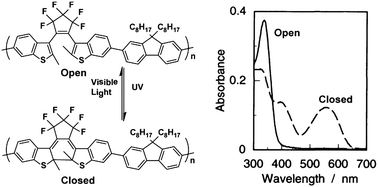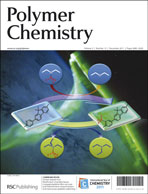Main-chain photochromic conducting polymers
Abstract
The optoelectronic properties of photochromic materials change in response to exposure to certain wavelengths of light. These alterations arise from specific electronic reorganization of conjugation pathways due to photochemically-triggered cyclizations and conformational changes.


 Please wait while we load your content...
Please wait while we load your content...